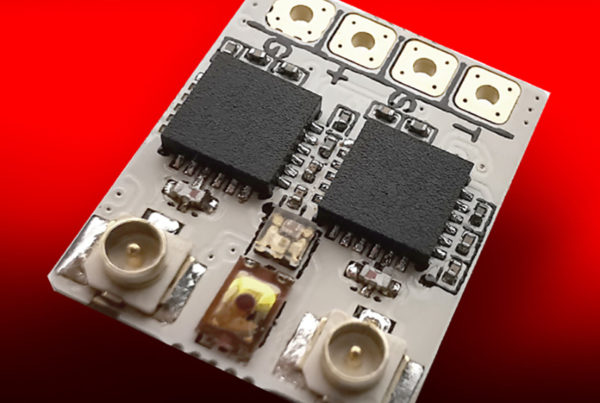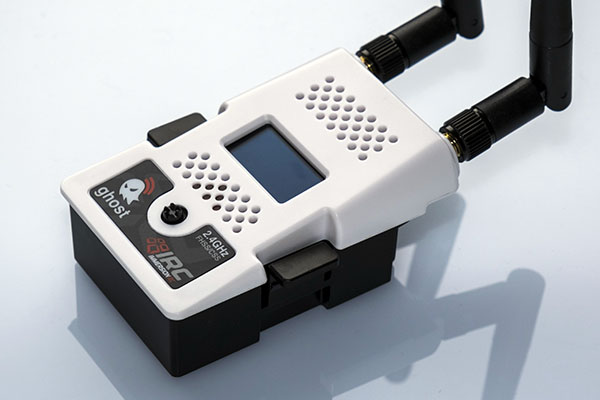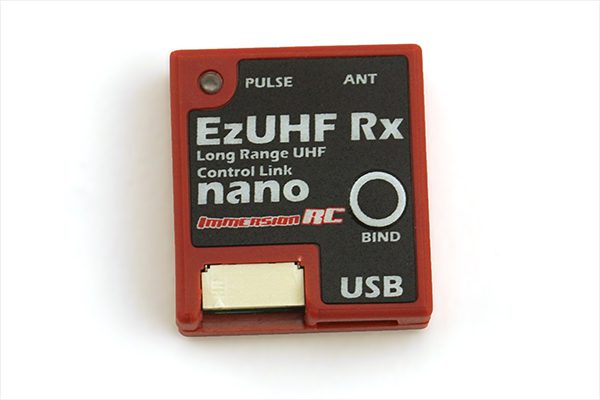EzUHF – NanoRX 3 Channels Receiver
No longer available
A Full Featured LRS
When 2.4GHz R/C systems run out of steam, UHF Long Range Systems are ready for more.
The EzUHF system has proven performance, and was used by the long-range FPV experts for their famous proximity flights.
Reliable FHSS Link (Frequency Hopping, Spread Spectrum)
-108dBm Sensitivty
Ceramic filtered input, eliminates nearby high-power video Tx interference
Multicopter mode, emits up to 12 channels of PPM on a chosen channel
3 servo connectors on a special cable for wings
USB port for future upgrades
Serial data output for lower latency communication to flight controller

Low Latency for fast reaction
To control latency, the EzUHF NanoRx can be loaded with a special firmware that outputs serial output to the flight controller. Number of transmitted channels and synchronisation of transmission can be enabled to diminish transmission latency.
Built-in Spectrum Analyzer
The only commercial LRS to include this essential feature; a built-in Spectrum Analyzer. This essential tool may be used to ensure that a model emits no interfering emissions on the UHF band, which could reduce range.
Plug in a standard USB cable, install the free ImmersionRC Tools, and create charts of power emitted on the UHF spectrum.


Arbitary Channel Mapping
Using the ImmersionRC Tools, the servo outputs of the Nano RX may be arbitrarily remapped to suit the target model.
Multicopter wiring may be greatly simplified using a single PPM cable, easily configured using the tools. Serial Output uses standard 12 channel mapping.
Uplink Status (UPSTAT)
All uplink status is available in the single-cable PPM stream for use by supported OSDs. The XuGong v2/Pro, The Vortex and Vortex Pro take advantage of this method to show critical uplink status on-screen.
The received signal strength (RSSI) of the receiver’s antenna, along with the link quality, are captured by the OSD, and displayed with appropriate alarms to indicate marginal conditions.

SPECIFICATIONS & SUPPORT FILES







